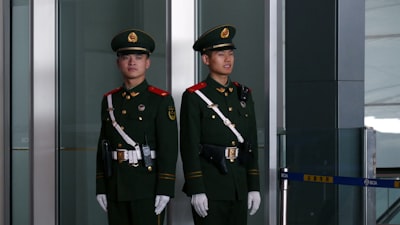The Next Phase of US-China Military Competition: What Might Change Under Trump 2.0?
As global attention turns once again to Washington, the prospect of a Trump 2.0 presidency brings fresh urgency to the US-China military face-off. With China’s PLA (People’s Liberation Army) modernizing at an unprecedented pace, America’s defense priorities are shifting—raising key questions about Asia-Pacific security, military technology, and the balance of power in the Indo-Pacific. How will America adapt, and what are the real stakes?
Redefining US Military Strategy: The "Pacing Threat" of China
- Keyword focus: US military strategy, China pacing threat, Trump China military policy
In defense circles, China is now universally described as a "pacing threat"—the primary force shaping US military planning, budgets, and alliances. Under Trump 2.0, expect increased emphasis on:
- Modernizing nuclear and missile deterrents
- Upgrading and expanding the US Navy, with special focus on the Pacific fleet
- Strengthening Indo-Pacific alliances (Japan, Australia, India)
- Accelerating cyber and space defense initiatives
Technology Race: Hypersonics, AI, and Strategic Edge
- Keyword focus: US vs China military technology, hypersonic missiles, AI in defense, emerging military tech
The US-China rivalry is driven by next-gen military technology:
- Hypersonic Missiles: Both sides are racing to deploy weapons that travel at multiples of the speed of sound, evading traditional air defenses.
- Artificial Intelligence (AI) in Defense: AI enables autonomous targeting, cyberwarfare, and advanced surveillance.
- Space Militarization: Both are working quickly to dominate orbital intelligence, communication, and even anti-satellite weaponry.
Indo-Pacific Posture: Bases, Presence, and Proxy Flashpoints
- Keyword focus: Indo-Pacific security, Taiwan Strait crisis, South China Sea, US military bases Asia
Expect Trump 2.0 to double down on military presence and exercises in the region:
- Expanded rotational deployments to Guam, the Philippines, and Australia
- Intensified patrols and Freedom of Navigation Operations in the South China Sea
- Sharpened security commitments to Taiwan amid rising cross-strait tensions
- Possible new basing agreements in Southeast Asia
Escalation Risks and Diplomatic Challenges
- Keyword focus: US-China tensions, risk of military escalation, defense diplomacy
With both sides enhancing readiness, accidental clashes become more likely—at sea, in the air, and across cyber domains. The Biden administration emphasized "guardrails" to manage crises; will Trump 2.0 offer the same, or double down on military pressure?
The Debate: Containment vs. Cooperation
Public discussion is heating up: Should the US aim to contain China, or find ways of peaceful competition? Analysts warn against a new arms race, even as Congress questions military readiness.
FAQs
Q: How is the US military prioritizing China compared to Russia and other threats? A: China is now the primary focus, with resources and planning reallocating from Europe and the Middle East to the Asia-Pacific.
Q: Which US allies are most critical in countering China? A: Japan, Australia, South Korea, and increasingly India and the Philippines are central to US strategy.
Q: Could Trump 2.0 lead to a direct military confrontation with China? A: While unlikely, increased military activities and rhetoric heighten the risk of miscalculation, especially around Taiwan or the South China Sea.
Conclusion: The Stakes of US-China Military Competition in 2025
Trump’s return to the White House would likely fast-track US military modernization and intensify rivalry with China. For citizens, businesses, and policymakers, understanding these strategies is crucial—not just for geopolitics, but for the global economy and security. How the US handles the next phase of its competition with a rapidly rising PLA may shape the world for decades to come.
Stay informed: Follow developments in US-China military relations, and consider the broader impact of high-level defense policy changes on international peace and your own local economy.

Comments
No comments yet. Be the first to comment!